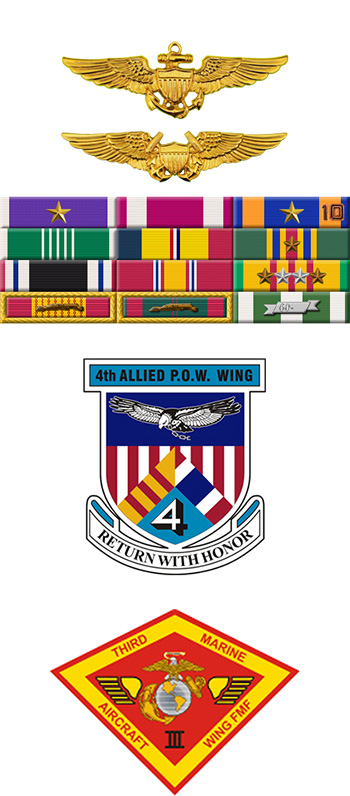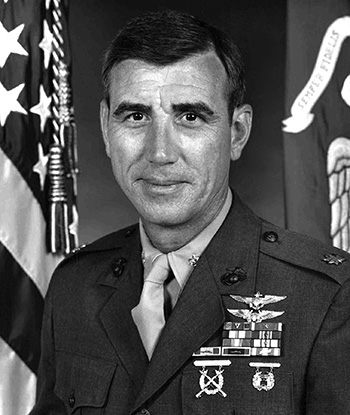
|
Paul G. Brown |
 |
|||
| Rank, Service | ||||
Lieutenant Colonel O-5, U.S. Marine Corps |
||||
| Veteran of: | ||||
|
||||
| Tribute: | ||||
Paul Brown was born in 1943 in Massachusetts. After completing all requirements on an accelerated summer undergraduate course completion at Boston University in January 1966, he enlisted in the U.S. Marine Corps on February 18, 1966, and began Officer Candidate School at MCB Quantico, Virginia, in March 1966. He was commissioned a 2nd Lt on May 26, 1966, and received his bachelor’s degree from Boston University in June 1966 with the rest of his classmates. Lt Brown next attended Naval Flight Officer training at NAS Pensacola, Florida, followed by Radar Intercept Officer training for F-4 Phantom IIs at NAS Glenco, Georgia. He was then selected for A-6 Intruder Bombardier/Navigator (B/N) training at NAS Sanford, Florida, followed by A-6A replacement crew training at MCAS Cherry Point, North Carolina, before deploying to South Vietnam in March 1968. Lt Brown served as an A-6A B/N with VMA(AW)-533 of the 1st Marine Aircraft Wing at Chu Lai, South Vietnam, from March 1968 until he was forced to eject over North Vietnam while flying his 104th combat mission on July 25, 1968. He managed to evade capture until July 26th, when he was taken as a Prisoner of War, while his pilot was retrieved by a rescue helicopter. After spending 1,693 days in captivity, Capt Brown was released during Operation Homecoming on March 14, 1973. His next assignment was for flight training at NAS Pensacola, Florida, in the T-34 Mentor, and then to advanced jet training in the T-2C Buckeye and TA-4J Skyhawk at NAS Beeville, Texas, where he was designated a Naval Aviator in February 1975. Maj Brown then served as a KC-130 Hercules pilot and instructor pilot, Supply Officer, Administrative Officer, and then Operations Officer of VMGR-352 of the 3rd Marine Aircraft Wing at MCAS El Toro, California, from February 1975 to October 1978, and during this time he was designated the Refueling Area Commander for Trans Pacific movement of fighter aircraft from the Continental United States (CONUS) to Japan, and then as Director of the KC-130F/R flight simulator at MCAS El Toro. After serving as the Executive Officer/Operations Officer for a Combined Arms Exercise at the Marine Corps Combined Arms Combat Training Center (MCCACTC) at 29 Palms, California, he was selected as the Officer in Charge of the Expeditionary Airfield at MCCACTC from October 1978 to June 1980. LTC Brown served as Director of Safety and Standardization with Marine Air Group 13 at MCAS El Toro from June 1980 to September 1982, and then as Director of Safety and Standardization for the 3rd Marine Aircraft Wing at El Toro from September 1982 to August 1984. His final assignment was as Commanding Officer of Marine Wing Headquarters Squadron 3, with over 1,300 Marine Corps personnel, from August 1984 until his retirement from the Marine Corps on June 1, 1986. |
||||
|
||||

